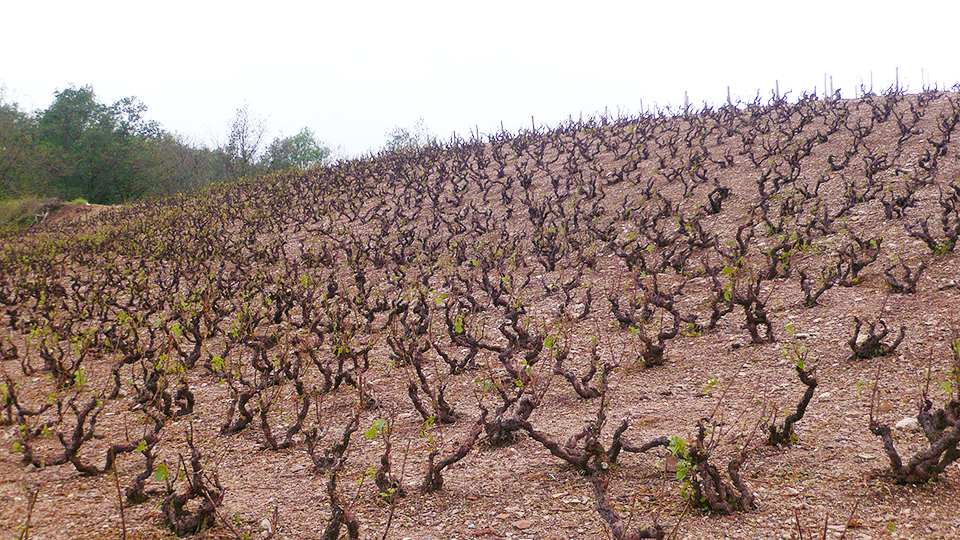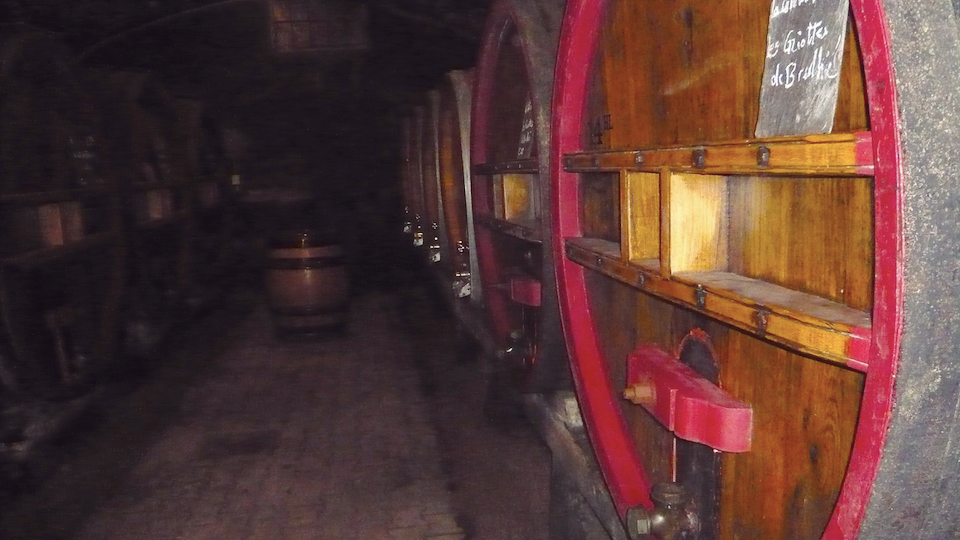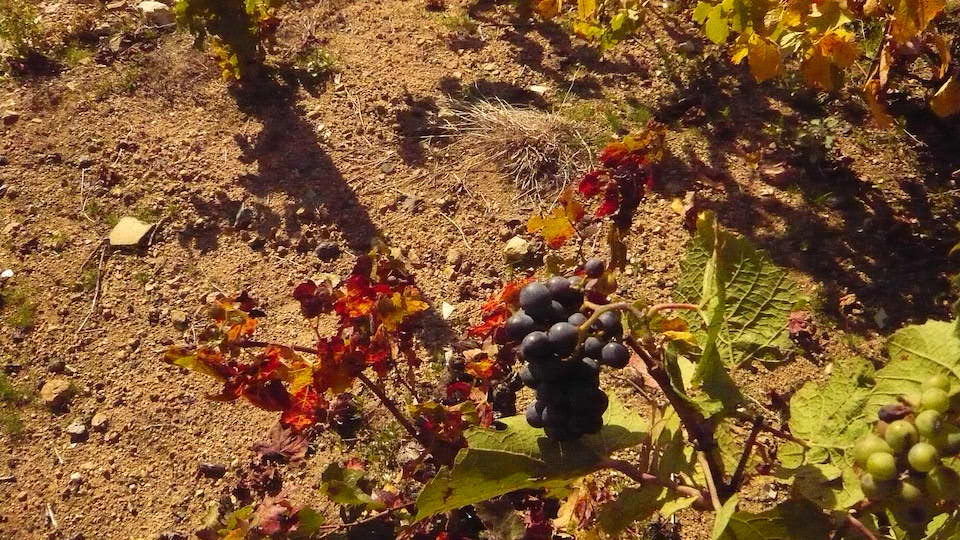Browse using the new Vinous website now. Launch →
Printed by, and for the sole use of . All rights reserved © 2015 Vinous Media
2016 Beaujolais: Hail, Yes
BY JOSH RAYNOLDS | MARCH 20, 2018
Hot on the heels of the superb if atypically ripe and powerful 2015s, most 2016 Beaujolais are built along more classical lines, emphasizing lively, sharply delineated red fruit, floral and spice qualities and offering succulent early drinkability. Readers whose idea of great Beaujolais is defined by years like 2014 and 2013 (both outstanding vintages) are going to find plenty to like in the 2016s. Unfortunately, severe hail events in some of the region’s best vineyards cut production for many producers, often dramatically.

Vines in Morgon on June 4, 2016, the morning after a violent hailstorm
Beaujolais Makes Its Move
Thanks to a number of factors, including a recent eight-year run of very good to spectacular vintages (2012 being the sole weak link in the chain), worldwide demand for wines from top Beaujolais estates has been climbing steadily. Numerous importers, wholesalers and retailers with whom I regularly speak have told me that their allocations of the most-in-demand bottlings from 2015 and 2016 were often pre-sold before the wines even hit U.S. ports. Many of the producers that I visited this past October noted that they’ve never had so many requests for cellar visits – and new customers in general – and that many of these oenophiles are Burgundy lovers who have been forced to cut back their purchases from the Côte d’Or, often severely, because of skyrocketing prices and diminishing availability. Then there’s the matter of value, which strongly favors Beaujolais as top-notch bottlings can often deliver astounding quality when compared to wines from pretty much any other region of France.
Nature Giveth and Taketh Away
Two thousand sixteen got off to a warm, very early start but the weather turned cooler in late spring, with some frost spells across the region in April. Then, as in much of central France, Beaujolais was struck by scattered hail throughout late April and into early summer, with some especially brutal storms hitting in May and early June. No part of the appellation was spared, but the damage was especially devastating in Fleurie, Chiroubles and Morgon, with some vineyards in those villages suffering total crop destruction. Fortunately, the timing of the hail was such that producers who have the will and the means had plenty of time to go through their damaged vineyards to cull out damaged fruit. Temperatures rose steadily through the summer. By the end of September (the warmest September on record in Beaujolais) it was clear that 2016 would be a classic vintage, producing wines with good depth, healthy acidity levels and noteworthy balance. The problem, of course, is that in many instances there simply wouldn’t be much of them.

Old foudres in the cellar beneath the historic Château Thivin
The Wild Side of Beaujolais
Given how many of the top domains in Beaujolais practice organic and/or biodynamic farming and low-intervention – even no-sulfur – winemaking, it’s no shock that many emerging young producers in the region are following similar regimens. That’s a noble cause, to be sure, especially in the vineyards, but things get tricky in the cellar, especially if hygiene isn’t a top priority. This was evidenced by the number of wines I tried that, once again, showed one or all of the three “F” qualities: funky, feral and fecal. Obviously, everybody has their own personal threshold for such characteristics, and while I consider my own tolerance for the first two “Fs” to be reasonably high (I have zero patience with the third), I also know that many wine lovers are far less forgiving of such idiosyncrasies. For better or worse, Beaujolais does seem to have a greater number of natural-wine producers, many of whose wines display these characteristics, than most other French wine regions. So those of gentle palate should be on their toes when it comes to shopping for minimal-intervention “natural” wines from this Beaujolais.
Drinking the 2016s
It’s the rare 2016 Beaujolais that’s tough to drink right now, at least based on the wines I’ve sampled so far. That said, a number of producers have yet to release their top bottlings, especially those who practice longer, Burgundy-style élevage. I’ll be tasting those wines this spring and summer for a follow-up article. Even though most of the ‘16s covered in this article are already delicious, the best wines possess impressive concentration and balance, two factors that suggest they will enjoy graceful aging curves. I have purposely kept my drinking windows on the conservative side, suggesting that readers are probably best off drinking these wines before their tenth birthday for their exuberant fruit. However, experience with vintages like 2016 has taught me that such wines can often hold up well into their second decade of life so I wouldn’t be afraid of stashing some of the top bottlings away until 2026 or beyond.
A small, stray, post-harvest cluster in Moulin-à-Vent
I tasted the majority of these wines during my trip to the Beaujolais region last fall and the others in New York through the winter, as they were released.
You Might Also Enjoy
2015 Beaujolais: Monumental But Often Atypical, Josh Raynolds, December 2017
2015 Beaujolais Part 2: A Vintage of Richness and Energy, Josh Raynolds, January 2017
2015 Beaujolais Preview: Atypically Brawny but Often Excellent, Josh Raynolds, August 2016
2014 Beaujolais: Another Dream Vintage, Josh Raynolds, August 2016
Multimedia: On Recent Beaujolais Vintages, Josh Raynolds, August 2016
A Lucky ‘13 for Beaujolais Lovers, Josh Raynolds, July 2016
Show all the wines (sorted by score)
- Alain Farges
- Albert Bichot
- Albert Bichot (Domaine de Rochegrès)
- Alexandre Burgaud
- Alex Foillard
- Anthony Thévenet
- Antoine Sunier
- Boutinot
- Bret Brothers
- Cédric Vincent
- Château Bonnet/Pierre-Yves Perrachon
- Château Cambon
- Château de Belleverne/Jean-Paul Bartier
- Château de Bellevue/Jean Loron
- Château de Durette
- Château de Javernand
- Château de Juliénas
- Château de la Chaize
- Château de la Terrière
- Château de la Valette/Jean-Pierre Crespin
- Château de L'Éclair
- Château de Nervers
- Château de Pizay
- Château de Saint-Lager
- Château des Jean-Loron/Guillaume Bouchacout
- Château du Chatelard
- Château du Moulin-à-Vent
- Château Gaillard/Sébastien Gutty
- Château Grand' Grange
- Château Grange Cochard
- Château La Romancière/Claire Midey et Fils
- Château Thivin
- Clos de la Roilette/Alain Coudert
- Clos du Fief/Michel et Sylvain Tête
- Collin Bourisset
- Crêt des Garanches/Sylvie Dufraite-Genin
- Damien Coquelet
- Damien Coquelet, Frederic Cossard & Kewin Descombes
- Daniel Bouland
- Domaine André Colonge et Fils
- Domaine Anita
- Domaine Baron de L'Écluse
- Domaine Bertrand
- Domaine Blain Soeur et Frère
- Domaine Bourdon
- Domaine Burnichon
- Domaine Chardigny
- Domaine Chasselay
- Domaine Cheysson
- Domaine Chignard
- Domaine d'Amaury
- Domaine de Briante
- Domaine de Colette/Jacky Gauthier
- Domaine de Colonat
- Domaine de Côtes Rémont
- Domaine de Croix Folie/Gérard Crozet
- Domaine de Fa
- Domaine de Fontalognier
- Domaine de Gry-Sablon/Dominique Morel
- Domaine de la Bonne Tonne
- Domaine de la Bouronnière/Fabiel Lescure
- Domaine de la Chaponne
- Domaine de la Combe au Loup
- Domaine de la Grand'Cour/Jean-Louis Dutraive
- Domaine de la Grume/Nicolas Boudeau
- Domaine de la Madone
- Domaine de la Milleranche
- Domaine de la Plaigne
- Domaine de la Prebende
- Domaine de la Rocaillère/Vincent Fontaine
- Domaine de la Voûte des Crozes
- Domaine de Roche-Guillon
- Domaine des Arbins/Annie et Franck Lathuilière
- Domaine des Chers/Arnaud Briday
- Domaine des Fournelles/Guillaume Dumontet
- Domaine des Fourquières/Daniel Basset
- Domaine des Marrans
- Domaine des Nugues/Gilles Gelin
- Domaine des Rosiers
- Domaine des Terres Dorées
- Domaine des Terres Vivantes
- Domaine du Bois du Chat/Jeremy Bally
- Domaine du Bravy
- Domaine du Breuil/Guillaume Bouchacourt
- Domaine du Crêt de Bine
- Domaine du Pavillon de Chavannes
- Domaine du Penlois
- Domaine Dupeuble Père et Fils
- Domaine du Pressoir Fleuri
- Domaine Durand
- Domaine du Vissoux/Pierre-Marie Chermette
- Domaine Gaget
- Domaine Gilles Copéret
- Domaine Girin
- Domaine J. Boulon
- Domaine Jean-François Debourg
- Domaine Joncy
- Domaine Lagneau
- Domaine Le Cotoyon
- Domaine Le Fagolet
- Domaine Les Bruyères
- Domaine Les Capréoles
- Domaine Longère
- Domaine Louis Boillot et Fils
- Domaine Matray
- Domaine Mickael Nesme
- Domaine Monternot
- Domaine Passot Collonge
- Domaine Raphaël Chopin
- Domaine Richard Rottiers
- Domaine Romy
- Domaine Ruet
- Domaine Striffling
- Domaine Tano Péchard
- Dominique Cornin
- Dominique et Rémy Passot
- Dominique Jambon
- Emmanuel Fellot
- Famille Barbet
- Famille Dutraive
- Frédéric Berne
- Georges Descombes
- Gérard Charvet
- Gérard Lebeaupin
- Guénael Jambon
- Guy Breton
- Jacques Lespinasse
- Jean-Claude Chanudet
- Jean Foillard
- Jean-François Coquard
- Jean-Guillaume Passot
- Jean Loron
- Jean-Marc Burgaud
- Jean-Marc Laforest
- Jean-Michel Dupré
- Jérôme Lacondemine/Vincent Lacondemine
- Joël Lacoque
- Julie Balagny
- Julien Sunier
- Justin Dutraive
- Karim Vionnet
- Laurent Gauthier
- Laurent Perrachon et Fils
- Les Frères Perroud
- Les Vins Georges Duboeuf
- Lionel Manigand
- Louis-Claude Desvignes
- Lucien Lardy
- Maison Emmanuel Giboulot
- Manoir du Carra
- Mathilde et Stephen Durieu
- M & C Lapierre
- Michel et Sébastien Dufour
- Michel Guignier
- Mommessin
- Odile et Patrick Le Bourlay
- Oedoria
- Olivier Pezenneau
- Pardon & Fils
- Pascal Aufranc
- Pascal Berthier
- Patricia et Bernard Jomain
- Patrick Tranchand
- Paul Durdilly et Fils
- Puy Raffin
- Rémy Lacoque
- Robert Perroud
- Romain Jambon
- Santini Frères
- Vignerons de Bel Air
- Vignobles Bodillard
- Vignobles Bulliat
- Vignobles des Roches
- Yohan Lardy
- Yvon Métras

